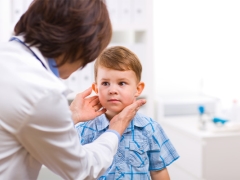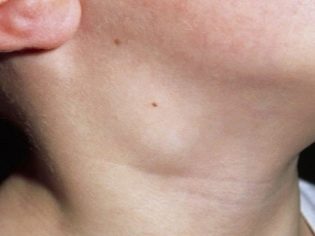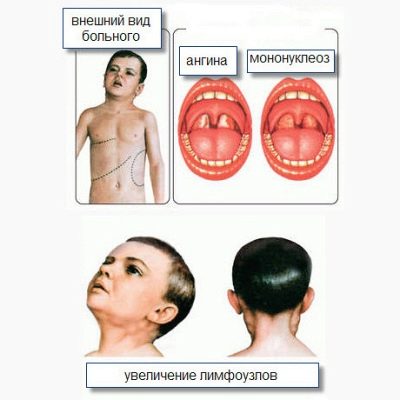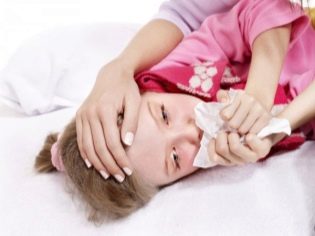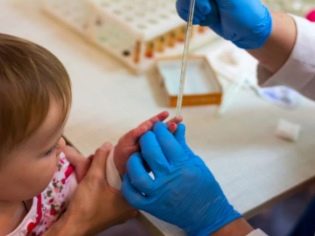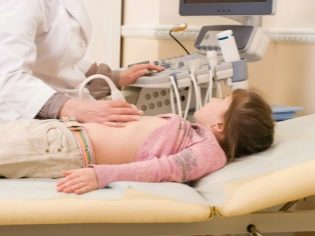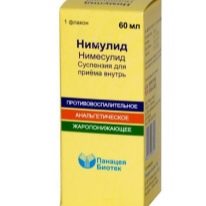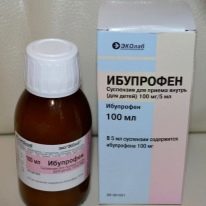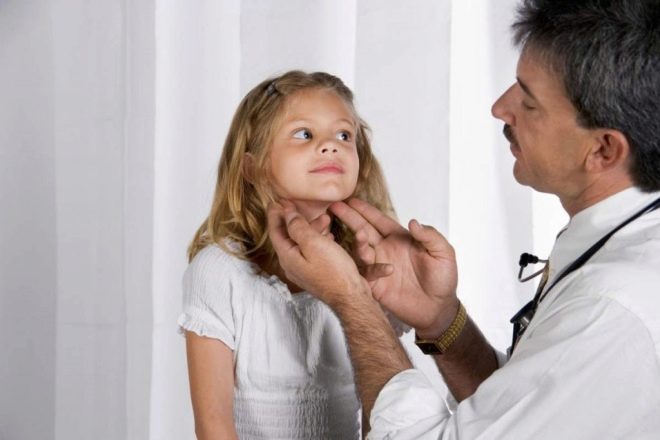What to do if lymph nodes are enlarged around the neck of a child?
Many parents begin to worry a lot when they notice that the child has enlarged lymph nodes in the neck. This condition can lead a variety of reasons.
Reasons for increasing
Lymph nodes are active participants in systemic immunity. They exist in our body in order to recognize any infections in time and cope with them effectively. There are many different groups of lymph nodes, which are located throughout the body. The cervical lymph nodes are located on the back of the neck. Normally, they are not palpable and do not protrude above the surface of the skin. To see healthy cervical lymph nodes is impossible.
With the influence of various factors in the cervical lymph nodes, inflammation begins. This leads to a pronounced increase.
They may turn bright red. Hyperemia appears, affected lymph nodes begin to be palpable. In some cases, they become the size of beans or almonds. On palpation, the child feels a noticeable pain.
Inflamed lymph nodes are usually tightly soldered to the skin. Any attempts to probe them cause an increase in pain in the baby. The child may refuse to conduct an inspection in any way. Often, little kids begin to cry and be capricious. In some diseases, the inflammatory process simultaneously affects several adjacent groups of lymph nodes. Submandibular lymph nodes are often enlarged if the lymph nodes in the neck are enlarged.
To increase the cervical lymph nodes often lead:
- Viral infections. The most common cause in babies and schoolchildren is infectious mononucleosis. This disease is caused by herpes viruses Epstein - Barra. Once in the body, viruses contribute to the development of the inflammatory process in it. Some time after the onset of the disease, various groups of lymph nodes become inflamed.
- Children's infections. Chickenpox and scarlet fever also occur with clinical signs of cervical lymphadenitis. Moreover, the increase in lymph nodes occurs rapidly immediately after the end of the incubation period of these diseases. Timely admission to the hospital contributes to the speedy recovery of the baby and the normalization of the size of the lymph nodes in the neck.
- Hypothermia The increase in the incidence of cervical lymphadenitis occurs mainly in the cold season. Poorly chosen clothes for walking outdoors and ignoring wearing a warm scarf during windy weather often contribute to severe inflammation of the lymph nodes in the neck. Pronounced stagnation of lymph in this area markedly worsens the well-being of the child.
- Various neoplasms. Fast growing tumors are the "dumb" reason for an increase in cervical lymph nodes. In some cases, the child's well-being does not change. The only and often the first manifestation of a neoplasm or a malignant tumor can be a significant increase in the size of the cervical lymph nodes. Usually they are dense, mobile and painless at palpation.
- Tuberculosis infection. The disease has a chronic course and is manifested by various adverse symptoms, including at certain stages, and cervical lymphadenitis.
- Immunodeficiency states. Toddlers with congenital or acquired HIV infection are at risk for the appearance of enlarged lymph nodes.
- Liver disease. Various damage to the liver cells lead to abnormal organ function. As a result, it develops hepatitis, one of the clinical signs of which is cervical lymphadenitis.
- Toxoplasmosis. Refers to infectious diseases. A child may become infected by a pet. Often cats become infections. After the incubation period, the child appears numerous symptoms of the disease, including an increase in the cervical lymph nodes.
- Diseases occurring with metabolic disorders. The disordered work of the internal organs of the body leads to the appearance of pathological states of the immune system. In some cases, this is manifested by an increase in various groups of lymph nodes, including cervical localization.
- Various diseases of the blood and blood-forming organs. Disturbances in various sprouts of blood formation lead to the development of lymphadenitis in children. Often the process involves lymph nodes located in the upper half of the body. To normalize their size, first, treatment of the underlying disease, which has caused such a pathological change, is required.
- Autoimmune diseases. Every year, children register more and more often. It occurs with the development of numerous symptoms that occur in various internal organs. Characterized by the appearance of characteristic failures in the immune system, manifested by the formation of specific autoantibodies that destroy the body's own cells.
Who to contact?
The appearance of enlarged lymph nodes is a significant concern for parents. Many moms and dads make a dangerous mistake when deciding to get treatment at home. They try to warm up the neck with a hot compress to reduce inflammation there. Do this categorically should not be!
Any warming up is very dangerous, as it can aggravate the course of the underlying disease and significantly worsen the prognosis of the disease:
- If the cause of cervical lymphadenitis is a new growth or tumor, the use of compresses is also strictly prohibited. This may contribute to the progression of tumor growth, which may lead to the active spread of metastases. Bacterial cervical lymphadenitis is also quite dangerous to treat at home without the supervision of a physician. Incorrectly chosen therapy can lead to negative consequences for the baby’s life and health. After the "home" warming of the lymph nodes, doctors often detect signs of suppuration in babies. High temperature can significantly enhance the inflammatory process and lead to the development of purulent abscess, or even cellulitis in the neck.
In order to eliminate such consequences of home therapy, an emergency hospitalization of a baby in a hospital and an operation are required.
- If the parents found inflamed and enlarged lymph nodes in the neck of the baby, first of all they should show the child to the doctor. The pediatrician will examine the crumb and be able to establish a presumptive diagnosis. To clarify it often requires additional analyzes and consultations of other specialists. The doctor chooses the scope of diagnosis individually, taking into account all the physiological features of the baby, as well as the presence of a set of clinical signs.
All babies with signs of enlarged cervical lymph nodes are required to undergo a complete blood count. This simple test allows you to clarify whether there is a viral or bacterial infection in the children's body. Also, using a general blood test, you can identify some specific pathologies of the blood-forming organs and detect the first signs of autoimmune diseases.
In some cases, to establish the correct diagnosis requires an extended diagnosis.It includes performing biochemical blood tests, ultrasound examination of the abdominal organs and kidneys, identification of tumor markers, computed and magnetic resonance imaging. The indications for these studies are very specific and are determined by the attending physician.
Babies with signs of cervical lymphadenitis are also examined by doctors of various specialties: cardiologists, oncologists, otolaryngologists, and others. These specialists can detect various, even rarely occurring diseases, which could be the primary cause of an increase in the cervical lymph nodes in a child.
After conducting a complex diagnosis, the doctor prescribes an appropriate treatment.
Treatment
Various methods of therapy are used to normalize the size of the lymph nodes. In some cases, prescribing is not required. For example, if cervical lymphadenitis occurs as a result of a postponed flu or ARVI. In this case, in 3-4 weeks the cervical lymph nodes will independently return to normal. In other cases, doctors resort to the appointment of various therapeutic agents.
For the treatment of cervical lymphadenitis in babies are used:
- The correct mode of the day. It is important to remember that the sick and feverish child must be in bed for the entire acute period of the disease. Long hot baths are prohibited at this time. Hygiene procedures are carried out under the shower. For quick recovery, the baby must sleep at least 9 hours a day.
- Nutritionenriched with vitamins and microelements. A deficiency of beneficial minerals often contributes to a reduced work of the immune system. This condition significantly inhibits the recovery of the baby. The daily inclusion of fresh vegetables and fruits in the children's menu, as well as special children's multivitamin complexes, will help the child to strengthen the immune system and get better soon.
- Drug therapy. For this, various groups of anti-inflammatory drugs are commonly used. These include: nimesulide, ibuprofen, ketorol other. The duration of such treatment is usually 4-6 days. Longer use of drugs is discussed with your doctor.
- The appointment of antibiotics and antiviral drugs. It is carried out only according to strict indications, when a proven infectious disease has become the source of cervical lymphadenitis. In this case, the course of properly selected antibacterial therapy helps to improve the well-being of the baby and leads to full recovery.
Currently, for the treatment of cervical lymphadenitis, doctors prefer drugs with a broad spectrum of action.
- Physiotherapy. It is held in the period of subsiding exacerbation. Strongly contraindicated in any tendency to purulent course of the disease! Several procedures may be performed to normalize the size of the lymph nodes. Usually the course of treatment is 10-12 sessions.
- Surgery. It is used only in emergency cases. Surgical treatment is usually carried out on babies with cancer and malignant tumors. The decision on the need for such an operation is made by a pediatric oncologist.
Prevention
In order for a child to not show signs of inflammation of the cervical lymph nodes, You should pay attention to the following tips:
- Aggravations chronic diseases must be treated. Sluggish inflammatory process often contributes to the spread of infection to the lymph nodes. If a child has chronic pathologies of internal organs, then it must be observed by the appropriate specialists. In some cases, a preventive treatment is required, which will help reduce the risk of aggravation in the future.
- Have regular checkups with your baby at the dentist. Carious and aching teeth are often the cause of various lymphadenitis in babies. The danger of this condition is that it can lead to the spread of infection in the body.Early treatment of diseased teeth will help prevent the possible development of lymphadenitis.
- Strengthen immunity. Maintaining a healthy lifestyle, proper nutrition, as well as good sleep are the guarantors of good health and mood.
Good work of the immune system protects the baby from various infections.
More information about the lymph nodes in a child will tell the doctor Komarovsky in the next video.
